
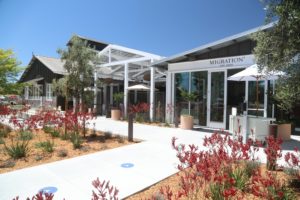
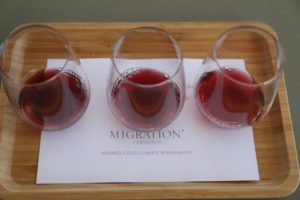 Migration Wines, was owned by TSG Consumer Partners, a San Francisco based private equity firm. In early October 2024, it was announced that The Duckhorn Portfolio was acquired by Butterfly Equity for 1.95 billion dollars. In addition to Duckhorn Vineyards, Butterfly Equity owns other wineries and brands within the Duckhorn Portfolio including Duckhorn (their flagship brand), Calera Wine Company in the Mount Harlan appellation east of Salinas in San Benito County on California’s Central Coast (a long time producer known for Pinot Noir), Canvasback (originally a label part of Paraduxx – now a Walla Walla, Washington based vineyard and brand), Decoy (can taste at Duckhorn), Greenwing (eastern Washington), Goldeneye (based to the north of the Napa Valley in Anderson Valley, Mendocino County), Kosta Browne Winery in Sonoma County and Paraduxx and Postmark (both Napa Valley). In addition to these wineries or brands, the company owns approximately 900 vineyard acres (15+ unique sites ranging in size from 5 acre parcels up to 75 acres) with a total production of over 900,000 cases.
Migration Wines, was owned by TSG Consumer Partners, a San Francisco based private equity firm. In early October 2024, it was announced that The Duckhorn Portfolio was acquired by Butterfly Equity for 1.95 billion dollars. In addition to Duckhorn Vineyards, Butterfly Equity owns other wineries and brands within the Duckhorn Portfolio including Duckhorn (their flagship brand), Calera Wine Company in the Mount Harlan appellation east of Salinas in San Benito County on California’s Central Coast (a long time producer known for Pinot Noir), Canvasback (originally a label part of Paraduxx – now a Walla Walla, Washington based vineyard and brand), Decoy (can taste at Duckhorn), Greenwing (eastern Washington), Goldeneye (based to the north of the Napa Valley in Anderson Valley, Mendocino County), Kosta Browne Winery in Sonoma County and Paraduxx and Postmark (both Napa Valley). In addition to these wineries or brands, the company owns approximately 900 vineyard acres (15+ unique sites ranging in size from 5 acre parcels up to 75 acres) with a total production of over 900,000 cases.
Their focus of Migration’s wine production is almost entirely on cool climate grown Chardonnay and Pinot Noir although they do produce limited production bottlings of other varieties. At the time of our visit and the latest update to this review, Migration produces no Napa Valley grown wines which is certainly an anomaly for a Napa Valley based physical winery and tasting room – although perhaps in the future they will source grapes from Napa Valley. Their first Pinot Noir was produced in 2001 from Anderson Valley in Mendocino County and the first Chardonnay produced was in 2008.
In 2019 the former Merryvale owned Starmont Winery was sold to Orsi Family Vineyards LLC. Orsi Family Vineyards leases the winery and hospitality center TSG Consumer Partners, the parent company of Duckhorn (Migration Wines). The winery is permitted for up to 225,000 cases a year and 96,000 square feet of barrel storage. The winery uses solar power and recycles wastewater.
Migration’s wine production is located within this existing winery. Starmont was the first modern-day winery to be built at Stanly Ranch having opened in 2006. Prior to Migration the hospitality space was used to showcase the Starmont wines from 2015 until Merryvale sold the property and winery in 2019.
Migration crafts wines from grapes grown in vineyards in neighboring Sonoma County but they also source from select vineyards in San Luis Obispo and Santa Barbara counties. From Sonoma County, Migration owns the 89-acre Running Creek Vineyard in the Russian River Valley planted to 70 acres of Pinot Noir and 20 acres of Chardonnay. The approximately 48-acre El Veredicto Vineyard, part of the Duckhorn Portfolio since 2022 is located adjacent to Migration Winery and features two separate parcels planted to Chardonnay, Pinot Noir, Syrah, Marsanne and Viognier.
Select Wines
Whites
The 2021 Migration Sonoma Coast Chardonnay is deep gold color in the glass; the first descriptor we wrote after smelling the bouquet was ripe yellow pineapple. There is a noticeable sweetness to the aromatics, a combination of both ripe fruit and baking spices. There are also scents of stone fruits including peaches, nectarines and apricots, mango and banana accompanied by notes of vanilla pudding, caramel, crème Brule, honeycomb and other assorted baking spices. Smells like dessert. The palate reveals flavors of pineapple, yellow nectarines, mango, ripe papaya, and honeydew melon. Intensely flavored the fruit continues to persist on the finish for some time. This wine also offers bright acidity complemented by a silky texture. 14.2% alcohol. It is a meal in the glass.
The 2021 Migration Chardonnay (Wente clones) Santa Rita Hills, Santa Barbara County Peake Ranch Vineyard is medium to deep gold in the glass; the bouquet offers aromas of warm butter, vanilla pudding, honeysuckle, tapioca, nectarines, apricots, mango, crème Brule and a light touch of toasted oak which shows more in the background. Bright, balanced, focused and fresh across the palate, this bottling offers flavors of citrus, pineapple, apricot, honeydew melon, and warm baking spices. The fruit-filled finish lingers for some time. Features a rich acidity with a lightly rounded texture. This wine was aged for 10 months in 100% French oak barrels of which 34% was new and 66% were neutral. It went through 75% malolactic fermentation. 14.2 % alcohol.
Grüner Veltliner is the most planted wine grape variety in Austria but in California, plantings are very rare. In the Napa Valley we are aware of only two producers who have/or are making wine from Napa Valley grown Grüner Veltliner: Lava Vine through its ownership affiliation with winemaker Rudy von Strasser who originally planted a small block on Diamond Mountain bottling it under von Strasser for several years and the Hess Collection with a small amount growing on Mt. Veeder.
There are other vineyards in California planted this variety, but it is rare to find. The 2019 Migration Edna Valley Gruner Veltliner (incidentally nearby RD Winery also sources Grüner Veltliner from the Edna Valley) is medium golden in color with a bouquet showing notes of honeysuckle, hints of petrol and a sweet fruity floral note. Offers a subtle savage or ‘wild’ character on the palate which is a characteristic we have noticed in a very small number of Chardonnay wines we taste from Napa Valley. Shows some weight with complexity and a richness of flavor. Lingers with a lemon/lime zest on the finish. A beautiful wine. While tasting this, we realized this would be the perfect wine to enjoy as a palate cleanser between tasting heavy Napa Valley Cabernet Sauvignon wines.
Reds

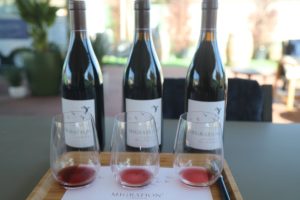
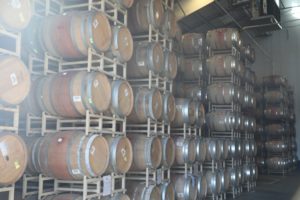 The 2021 Migration Santa Lucia Highlands Pinot Noir Tondre Vineyard is pale to medium ruby in color; the bouquet is floral including of dried rose petals accompanied by dried herbs included sage and thyme along with a note of parchment paper. But there is a noticeable aromatic brightness at play here including of assorted red berries. The palate is bright and focused on its fruit characteristics rather than any overt spice notes which are often associated with this variety. The palate offers flavors of red cherry, currant, red plum and a light herbal character. Two words we immediately jotted down after tasting this wine were balanced and seamless. It is bright but not tart. The tannins are rounded and linger with a mouth watering brightness and a light drying character. This wine is highly comfortable to enjoy by itself. If one were to describe a ‘clean Pinot Noir’ this bottling would be a good candidate for such a description.
The 2021 Migration Santa Lucia Highlands Pinot Noir Tondre Vineyard is pale to medium ruby in color; the bouquet is floral including of dried rose petals accompanied by dried herbs included sage and thyme along with a note of parchment paper. But there is a noticeable aromatic brightness at play here including of assorted red berries. The palate is bright and focused on its fruit characteristics rather than any overt spice notes which are often associated with this variety. The palate offers flavors of red cherry, currant, red plum and a light herbal character. Two words we immediately jotted down after tasting this wine were balanced and seamless. It is bright but not tart. The tannins are rounded and linger with a mouth watering brightness and a light drying character. This wine is highly comfortable to enjoy by itself. If one were to describe a ‘clean Pinot Noir’ this bottling would be a good candidate for such a description.
The 2017 Migration Pinot Noir Sonoma Coast is light to medium ruby in color. This wine smells like a Pinot Noir should – and for that matter one can taste the inherent varietal characteristics as well. The bouquet opens with elegant fruit driven aromatics including notes of raspberry and cherry along with just a hint of darker spice on the bouquet. Shows flavors of red cherry and currant. Offers higher toned red fruits with a noticeable brightness of acidity from start to finish. We especially noticed this acid after tasting through several other of their Pinot Noirs and then returning to this wine. Finishes clean, light and bright. A variety of shellfish would probably pair quite nicely with this bottling.
The 2017 Migration Running Creek Vineyard Pinot Noir is from dry farmed vines; this wine is medium ruby in color. It shows a pleasing intensity of both fruit and spices on the bouquet including hints of tobacco leaf, rhubarb, green tea leaf along with cranberry and pomegranate aromas. Very balanced across the palate with no sharp edges but with more depth then the 2017 Sonoma Coast Pinot Noir. There is a noticeable intensity across the palate which is complemented nicely by its liveliness of acidity. A hint of darker desert spice and an earthy note lingers on the finish. A very light grip of tannins.
The 2017 Migration Pinot Noir Bien Nacido Vineyards (Santa Barbara County) is lighter ruby in color; it offers a hint of an Asian spice initially but then dissipates as the wine breathes. Also, a tiny bit savory with some darker spices complemented by cherry. If we had to guess, we would say this wine saw a bit more newer oak than the other two Pinot Noir wines were tried from this vintage or perhaps was aged in barrels with a greater toast level. Features a raspberry/not overly ripe blackberry nuance on the palate. Shows some density with earthy darker tannins lingering with a light to medium grip along with a hint of cardamom spice.
The 2019 Migration Sonoma Coast Rosé of Pinot Noir (also sourced from the Running Creek Vineyard) is light salmon in color – initially shows a dusty, minerality characteristic on the bouquet which as it opens reveals strawberry. Notes of red cherry, strawberry, and citrus show on the palate – with a bright finish that lingers with a bit of tartness and flavors of red cherry. Slightly rounded in texture. This is a very easy drinking balanced rosé.
Hospitality
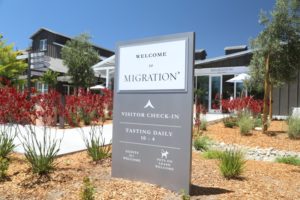

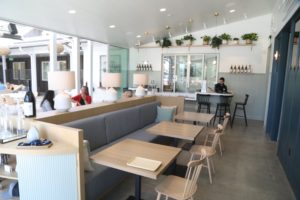 The winery and hospitality center are located merely 10-15 minutes from downtown Napa, depending on traffic. And due to its favorable south valley location, this is among the closest of the Napa Valley wineries to San Francisco – with little traffic usually an hour to an hour and 15 minutes drive. There is no sign for Migration from Carneros/Sonoma Highway 121. The sizable parking lot is located within a short walk of the hospitality center.
The winery and hospitality center are located merely 10-15 minutes from downtown Napa, depending on traffic. And due to its favorable south valley location, this is among the closest of the Napa Valley wineries to San Francisco – with little traffic usually an hour to an hour and 15 minutes drive. There is no sign for Migration from Carneros/Sonoma Highway 121. The sizable parking lot is located within a short walk of the hospitality center.
Tastings are held either semi-outdoors or inside the tasting room at several tables or in one of two smaller more intimate spaces. As of our latest update to this review, two tasting experiences are offered, a seated tasting or a tour of their production facility followed by a tasting of Pinot Noir only in a private room. Blankets are provided for colder day outdoor tastings.
While here one may see or hear private jets flying into and or out of the nearby private Napa County Airport. And see plenty of cars passing by on the nearby Napa River Bridge over the Napa River. One vintner we met several years ago told us he used to jog on this bridge when it was still under construction – at one point only halfway completed, he used to refer to it as “the bridge to nowhere”.
Tastings are usually organized by reds or whites although the staff has the flexibility to mix, and match based on guest preferences. And as the staff likes to say, the wines are poured “in the direction the birds migrate”. Select wines from their other brands/wineries may be available for tasting or purchase. Ever heard of a Barkuterie board? Migration Winery is dog friendly and offers several snacks for your pooch.
Winery tours including time among the nearby vineyards are not offered other than for wine club members who request it at the time of their visit. For more information, to schedule a tasting, to purchase wine, or to join one of their two wine clubs each featuring quarterly shipments of 4 bottles, visit: www.migrationwines.com
Stanly Ranch
Migration Winery is located on part of what used to be a 7,000 acre land grant given in 1836 by then governor of Alta California Mariano Chico to Nicholas Higuera. The grant was known as Rancho Entre Napa. In 1847 Higuera conveyed the majority of his land grant to Matteo Fallon who in turn conveyed his land to Julius Martin who claimed title on the land in 1856. But in 1852 Higuera conveyed part of his land to Ramon de la Riva despite having already transferred title in 1847. Confusion between rightful ownership ensued when Edward Stanly showed he had title to the land from Fallon and Martin sometime in 1857. In 1857 Stanly took his case to the Napa District Court and it was ruled in his favor. After that, his property became known as Stanly Ranch.
Of note, Edward’s father John Stanly as as a Member of the U.S. House of Representatives from North Carolina’s 10th district, He was also known for killing Richard Dobbs Spaight, a signer of the Constitution in a duel in 1802, the results of which changed North Carolina’s laws to prohibit those from holding public office to participate in duels.
This is the most eastern vineyard on the Napa side of Los Carneros and was originally planted to grapevines in the mid 1870s with the first grapes harvested in 1878. The property has long been associated with its namesake, the Stanly family. Judge Edward Stanly purchased the property and founded Stanly Ranch in 1856. He ran unsuccessfully for Governor of California the next year. He died in 1872 and that same year, his nephew, also a judge, John Stanly took ownership of the ranch. John Stanly lived at 1221 Jackson Street in Oakland and was part of the San Francisco law firm, Stanly, Stoney & Hayes. He spent significant time on this ranch, his home away from home he referred to as Riverdale. After his death in 1899 the ranch was transferred to his daughter Catherine Stanly Coghill, and her husband, Thomas Coghill. The ranch remained part of the family ownership until the 1940s including the Treanor family.
By 1900 the 1,600 acre ranch was planted to 300 acres of grapevines, 100 acres of orchards including several varieties of both pears (Bartlett and Buerre Clargean) and prunes (Robe de Sargent and French Petit) and the property was used for growing barley, oats, hay and corn. It is noteworthy to mention that the vines survived phylloxera due to the fact they were grafted onto vitis riparia rootstock.
A fruit dryer was also located on the property. The property was also home to Riverside Dairy with pasture land used for more than 300 cows at its peak with milk delivered daily to the citizens of Napa. For a period of time, viticulturist Henry Alphonse Pellett (known for his early viticulture work in St. Helena) was the superintendent of the ranch in the late 1890s Even in these early days it was remarkable the diversity of agriculture growing in ‘cool’ Carneros. In the 1890s a nearby 500 acre ranch with a packing house, was noted for its apricots, peaches, prunes and cherries growing on site.
Transportation to the ranch in the early days was by road, or ferry due to the ranch’s close proximity to the Napa River connecting to the San Pablo Bay and by train via nearby Thompson’s Station located on the Southern Pacific Railroad Line.
And a notable feature of the ranch are the rows of old Eucalyptus trees still growing along Stanly Lane (called ‘gum trees’ back in the day). Judge Stanly planted these in the 1870s and after the trees matured use to trim them back each hear to harvest the wood for fuel. An article in the October 18, 1889 issue of The Napa Register listed that approximately 25,000 of these trees were planted in groves, along the avenues and were used for wind breaks, especially useful for cows needing shelter on hot late summer and fall days.
An article dated March 9, 1900 in The St. Helena Star references that 18,000 gallons of wine made on site from the 1898 vintage was sold to Gustav Niebaum, owner of Inglenook Winery in Rutherford and what has become California’s oldest family run winery, Gundlach Bundschu in neighboring Sonoma County. The price per gallon was 25cents for a claret; it was also mentioned that these grapes ripened a month later than grapes grown up valley due to the colder climate. How times have changed, primarily through identifying and planting grapes that grow better in cooler climates such as Chardonnay and Pinot Noir.
And Stanly Ranch had its own winery called the Rancho Rincon de Los Carneros Winery built in 1890. An article in the Napa Journal dated December 17, 1893 references a fine stone winery 100 feet by 100 feet permitted to produce up to 200,000 gallons of wine annually. Wines from the property from what was called La Loma Vineyard earned numerous medals and awards at various tastings and viticultural fairs including at the World Exposition in 1893 in Chicago along with other Napa vintners from that era: Giacomo Migliavacca, H.W. Crabb, Tiburcio Parrott, the Beringer brothers and Jacob Schramsberg.
The winery was shuttered due to prohibition and tragically burned down during a major fire in July of 1936; during the fire it was estimated that 135,000 gallons of wine from the 1933 vintage being stored on the main floor was completely lost. This same fire destroyed or severely damaged some 13 other buildings on the property. And it was started by railroad crews to clear grasses along the nearby train tracks. An article in the Napa Register describing this fire noted that hundreds of Napan’s turned out to watch and or to help fight the flames. Incidentally but in no way related, a devastating fire gutted the main building at Napa High School the day before the Stanly Ranch fire.
Fast forward decades until the 1930s; the ranch caught the attention of Louis M. Martini when he purchased his first grapes from the property. In 1942 with the encouragement of André Tchelistcheff he acquired 200 acres of the original ranch and in 1948 his son Louis P. Martini began clonal trials of Chardonnay and Pinot Noir with the help of the Wente family (Wente Family Winery in Livermore) and Dr. Olmo at UC Davis.
And for several decades starting in the 1970s, a number of housing developments were proposed on Stanly Ranch (which at this point had been whittled down to 900 acres) including subdividing the ranch into small lots. In the mid 1980s it was proposed to sell the land to the Napa Land Trust but that never materialized. Several resorts also were proposed prior to the opening of nearby Stanly Ranch, Auberge Resort Collection.
The first ever Pinot Noir Stanly Ranch vineyard designate was from Abiouness Wines in the year 2000. Other Stanly named items in this part of Carneros are Stanly Lane and the Stanly Lane Smokehouse.
As of 2024, nine distinctive parcels on Stanly Ranch ranging in size from 20 to 110 acres are available for purchase. Each parcel has already been zoned for winery development with access to city water including reclaimed water for agricultural use. Each parcel is already planted to vines. We don’t recall anything similar ever being available in Napa Valley; one case study which comes to mind which features some similarities are the Vines of Mendoza in Mendoza, Argentina. Like Auberge, The Vines of Mendoza features a luxury resort surrounded by parcels of land which were subdivided within a greater piece of property specifically for wineries and vineyards.
Stanly Ranch, Auberge Resort Collection
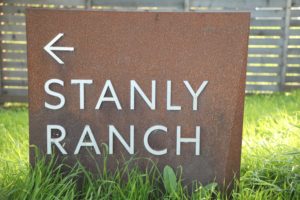 Previously plans called for a St. Regis to be built on the property. However, Stanly Ranch, Auberge Resort Collection broke ground in September 2019. This luxury resort and residential community features 78 stand-alone cottages and suites on 96 acres. Located within an easy walk of Migration Winery, this resort opened in late 2021. In addition to accommodations it also features several restaurants, small shops and an open area courtyard for guests to relax. And its Villa Residences and Vineyard Homes are available for ownership. The posted speed limit on the main road on the resort property is a posted 24 mph.
Previously plans called for a St. Regis to be built on the property. However, Stanly Ranch, Auberge Resort Collection broke ground in September 2019. This luxury resort and residential community features 78 stand-alone cottages and suites on 96 acres. Located within an easy walk of Migration Winery, this resort opened in late 2021. In addition to accommodations it also features several restaurants, small shops and an open area courtyard for guests to relax. And its Villa Residences and Vineyard Homes are available for ownership. The posted speed limit on the main road on the resort property is a posted 24 mph.
The resort is already known for its wellness programs including the Halehouse (home of their spa and numerous treatments), a gorgeous pool which dominates the outdoor area with its size, and various health sessions including those offered by off resort practitioners. A trail winds up to the impressive metal Infinity statue created by Napa artist Gordon Huether. From the artificial lawn underneath the statue one has great views of Stanly Ranch Resort and the vineyard covered lands of surrounding Carneros. Best visited at sunrise or sunset.
Due to its nearby location, Migration is perfectly poised to host guests from this resort. With several bike paths in this part of Carneros, it is an easy walk or bike ride to the Migration tasting room.
Stanly Ranch was built due to a unique situation in that the city limits of Napa extend down the highway into this tiny portion of Carneros, sometimes referred to as the “cherry tree stem”. The city of Napa annexed this part of Stanly Ranch in 1964. Otherwise, this resort would never have been built to do the fact that the surrounding vineyard land is in the Napa Valley Agricultural Preserve. And in the 1970s about 100 acres were acquired by the state for the widening of the highway. In 2023 and 2024 a significant number of new homes were built creating a sizable community.
In 2023 the resort won the No. 1 Best Resort Hotel in California, the No. 2 Best Resort Hotel in the U.S., and the No. 11 Best Resort Hotel in the World by readers of Travel and Leisure magazine.






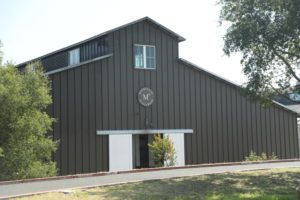
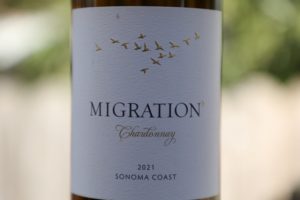
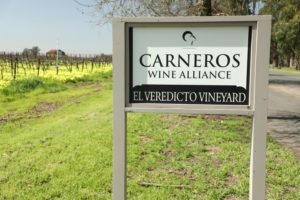
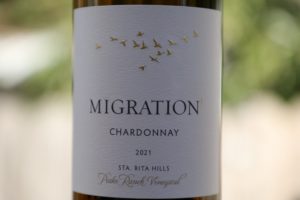
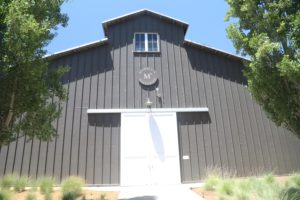
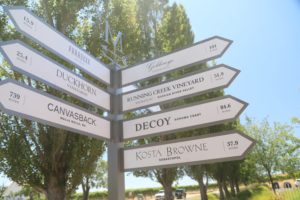
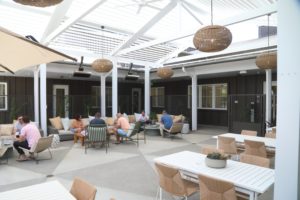
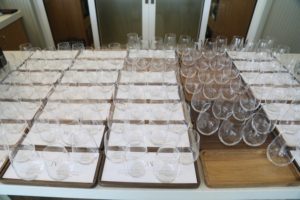
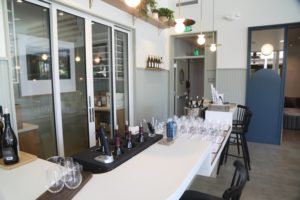
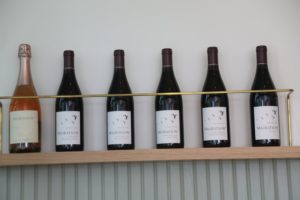
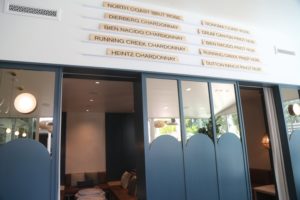
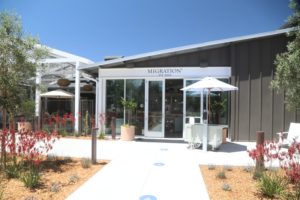

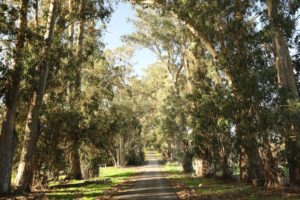
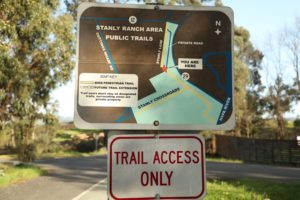
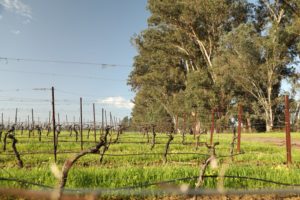
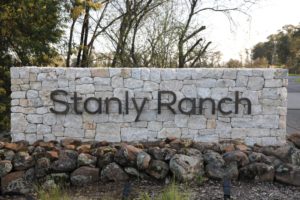
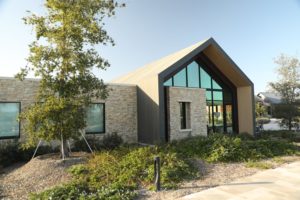
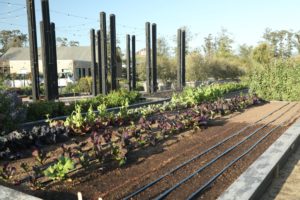
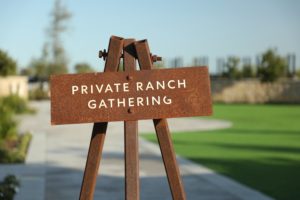
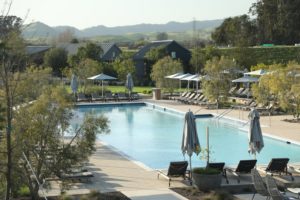

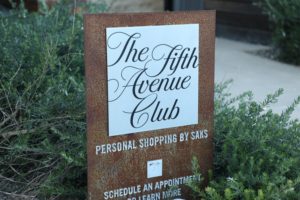
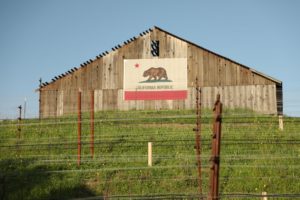


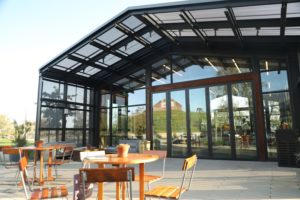
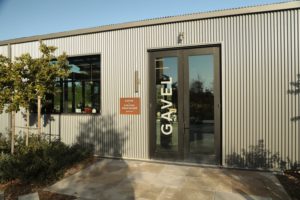
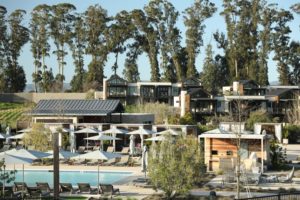
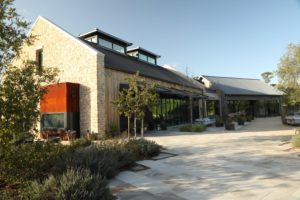


Good afternoon all,
we have Home Owners here at the Resort looking to taste with you.
This would be for a party of 6 on the 8th of October. (Friday)
I hope this email finds you well and we look forward to your response.
Good afternoon Steven – I hope you were able to connect with Migration directly. Certainly this is a convenient stop for your guests and of Auberge, Stanley Ranch 🙂